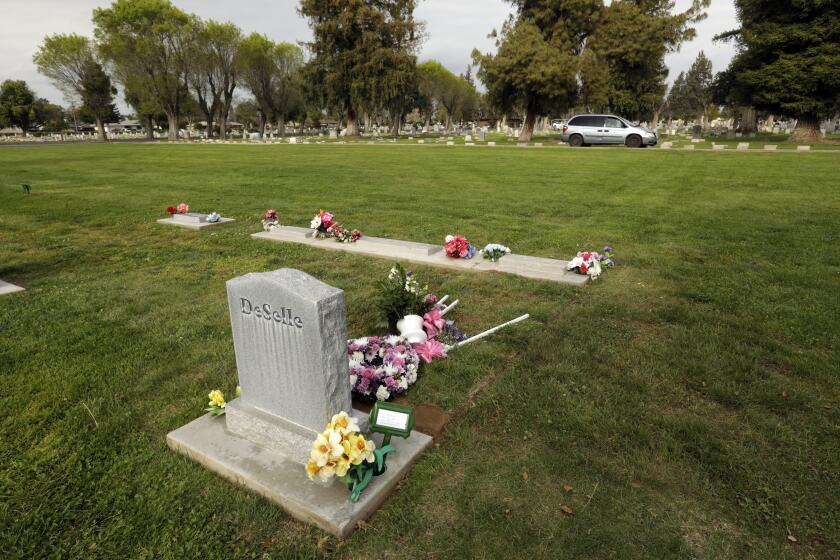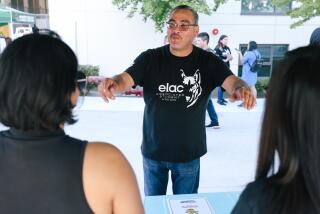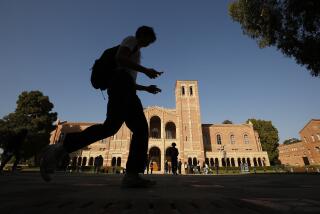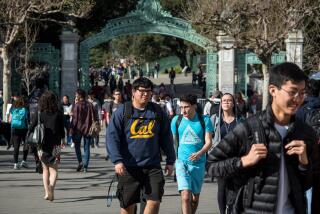California colleges can reopen with a ton of restrictions, limited dorms, online classes
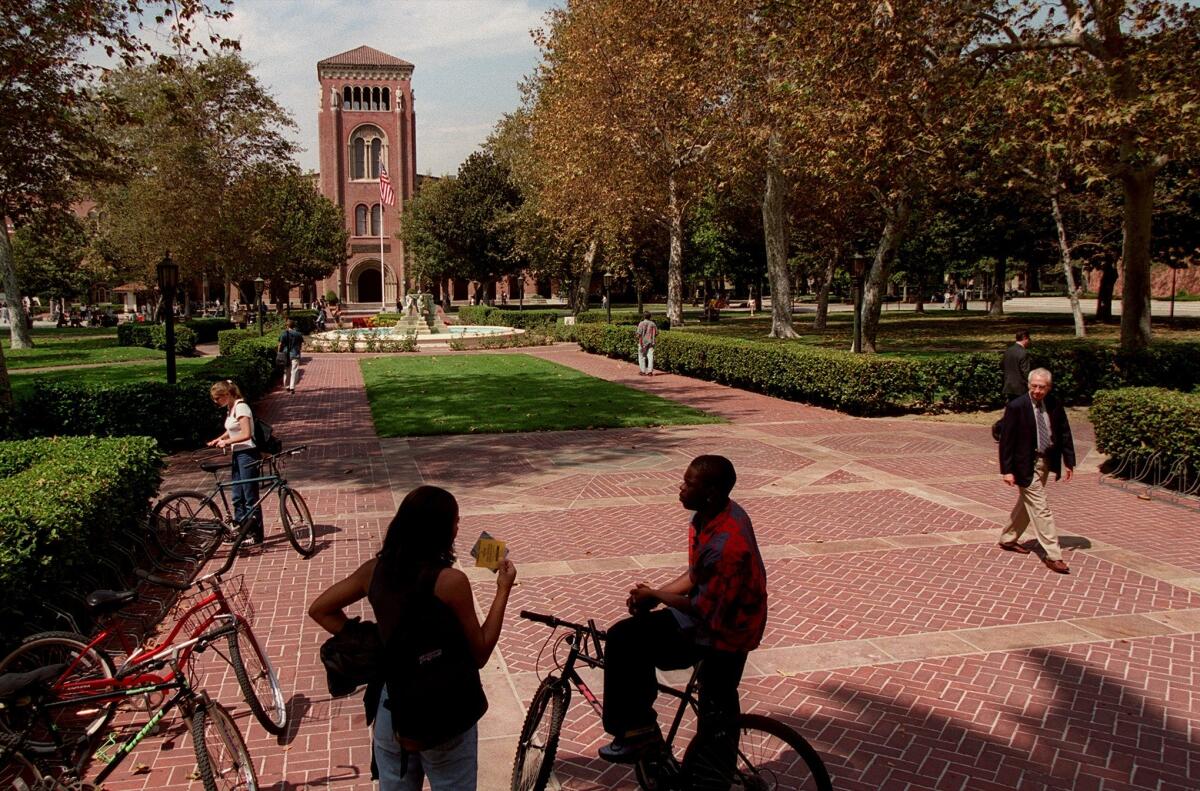
- Share via
As California colleges and universities reopen this fall they must adhere to strict limits on in-person classes and greatly restrict dorm and campus life, state public health officials said Friday in long-awaited guidance for how campuses can operate amid a surge in COVID-19 cases.
The delay in state guidance had frustrated campuses, which have scrambled to create varying reopening plans without knowing what ultimately would be approved by county and state public health officials and how that would affect thousands of students just days from starting fall semester.
Most colleges, including the vast UC and Cal State systems, have already announced they were planning to start the fall with mostly online classes. The state’s strict rules prohibit indoor lectures for campuses located within the 38 counties on the COVID-19 monitoring list.
Some institutions, including USC and Claremont McKenna College, had abruptly scaled down plans to bring back some students to campus and announced they would begin classes this month with fully remote instruction and greatly limited access to dorms.
County health authorities — who had said they were awaiting state rules — still need to review local health conditions and campus reopening plans to assess whether they meet local and state protocols. Los Angeles County issued its own draft guidance last week.
USC, which is set to begin classes Aug. 17, said in a statement late Friday that it “is currently reviewing and analyzing this guidance and will collaborate with the Los Angeles County Department of Public Health and other authorities to determine its impact on our plans to repopulate our campuses.”
A serious breakdown in the electronic collection of coronavirus testing data has raised questions about the numbers’ accuracy as the case count and death toll increases.
The university said it did not anticipate changes to plans to start the semester fully online with only limited exceptions for clinical education.
Its more ambitious reopening plans to allow as many as 20% of classes to meet in person and students to live in single-occupancy dorms have not received state and county approval as expected, university officials said Wednesday.
In a statement, the California Department of Public Health said any reopening would depend on “local conditions” including epidemiologic trends, availability of testing and adequate preparedness to respond to COVID-19 cases and outbreaks. State officials said campuses also would need to demonstrate a plan for safe distancing, a priority on single-occupancy dorm rooms, availability of takeout meals, the closure of nonessential shared spaces such as lounges and COVID-19 prevention training.
Certain specialized courses, such as labs and studio art, may be offered indoors with substantial physical distancing.
“As colleges and other institutions of higher education plan to resume in-person instruction, it’s critical that campuses make modifications to reduce risk,” Dr. Erica Pan, state epidemiologist, said in a statement.
UCLA, which begins fall quarter in late September, recently announced it would reduce its in-person classes to about 8% from up to 20% but continue to offer campus housing to 6,500 students. Officials did not immediately respond to questions about how the state guidance might affect its reopening.
Some campuses said Friday they were ready to move forward, confident their plans met both local and state protocols
Maria Klawe, president of Harvey Mudd College, alone among the five undergraduate Claremont Colleges in planning for an in-person reopening, said the state’s announcement gave her the confidence to welcome the 500-plus students who wish to return back to campus this month. The school also has plans for supporting students who wish to continue learning remotely.
“My biggest sense right now is relief,” Klawe said after reviewing the guidelines. “It’s been so much work because we had to plan for both scenarios. I do honestly believe this is as safe as a plan that we could possibly come up with. We have a lot of confidence in our students following our guidelines.”
Klawe said collaboration is at the heart of learning at the science-focused institution, and the state guidance will permit that. She said students would work in groups under a tent outdoors spaced six feet apart and wear masks unless eating.
She added that the college, which begins instruction on Aug. 24, would consult once more with L.A. County to ensure it has approval to open in person. “If the guidelines remain the same, I think we’re fine,” she said.
UC Berkeley and UC Merced also welcomed the state guidelines, saying they would allow the campuses to start largely remote classes with some dorm living Aug. 26. Officials from both campuses said they had developed their plans in close consultation with local health authorities and were optimistic that they met state standards.
UC Berkeley plans to open up to one-third of its dorms and apartments to single occupants. Lounges, residential workout facilities and academic centers will be closed for now but could open up later if users wore face coverings and maintained physical distances in keeping with public health guidelines, said Diana L. Harvey, an associate vice chancellor.
“UC Berkeley campus leadership is delighted that our carefully considered plans for limited occupancy in our residence halls are in alignment with today’s state guidance for higher education institutions,“ Harvey said.
UC Merced plans to house fewer than 500 students in campus housing and offer most classes remotely for the first four weeks of the semester and again after Thanksgiving. A small number of in-person experiences will be offered.
“The plans we have developed, working with our county public health officials, have us in a really good place for the fall semester,” said Andrew Boyd, chief resilience officer at UC Merced.
More to Read
Sign up for Essential California
The most important California stories and recommendations in your inbox every morning.
You may occasionally receive promotional content from the Los Angeles Times.
